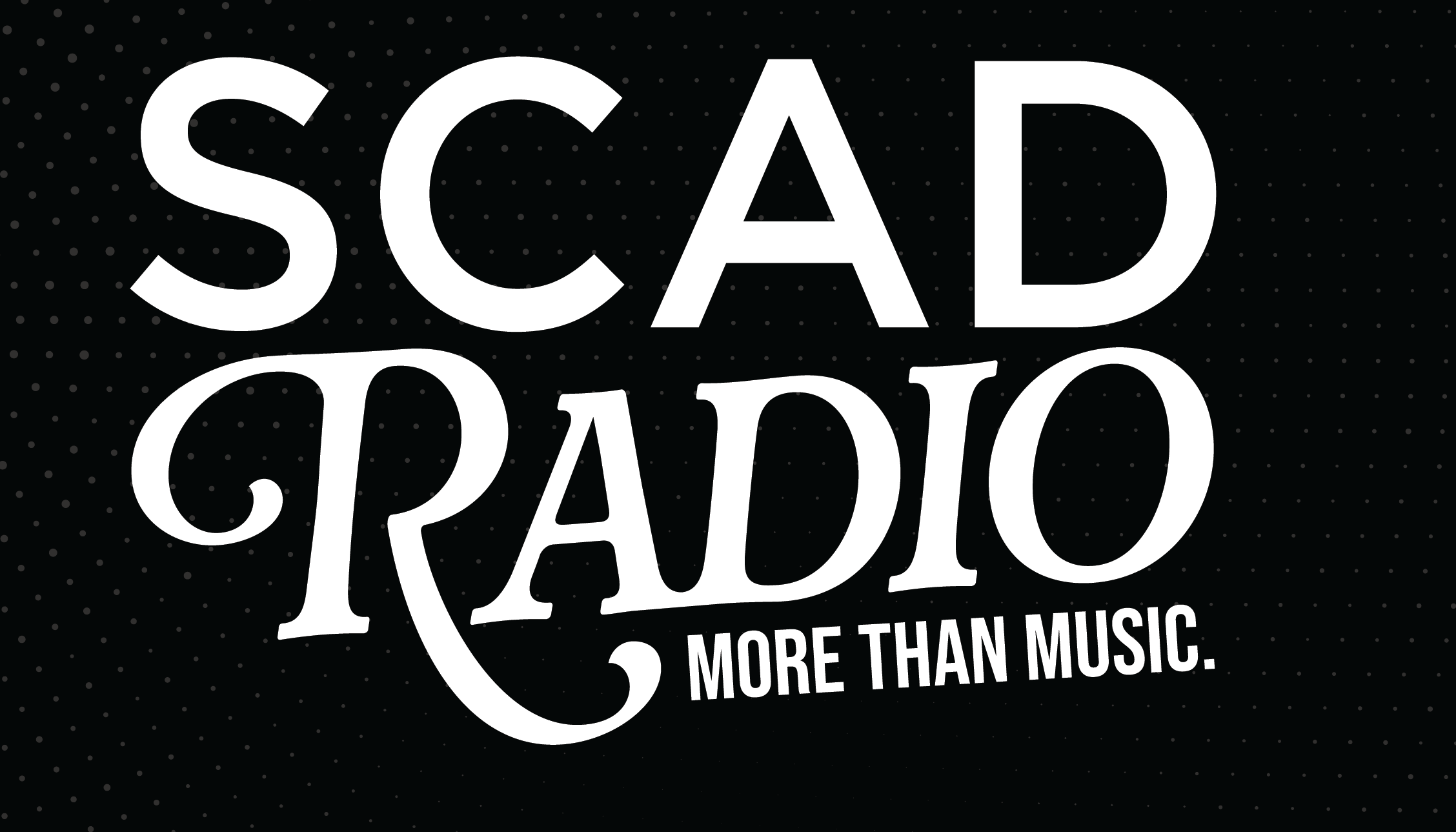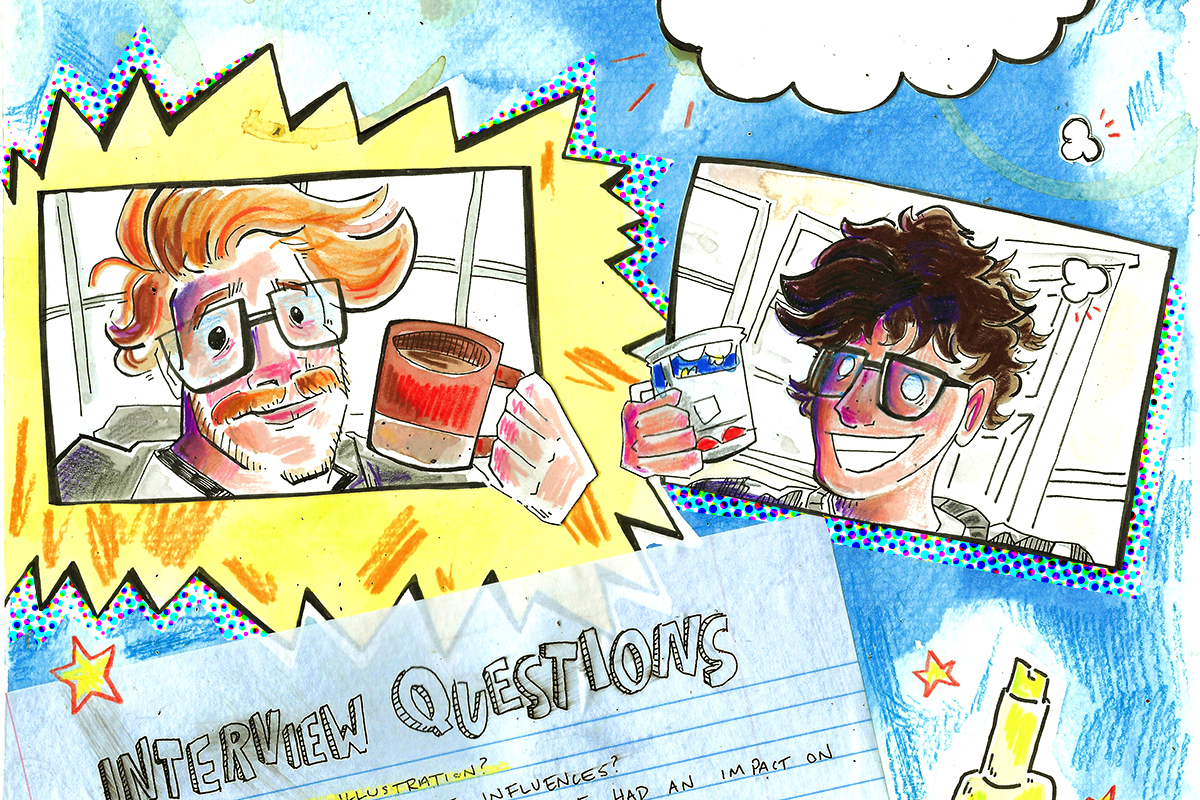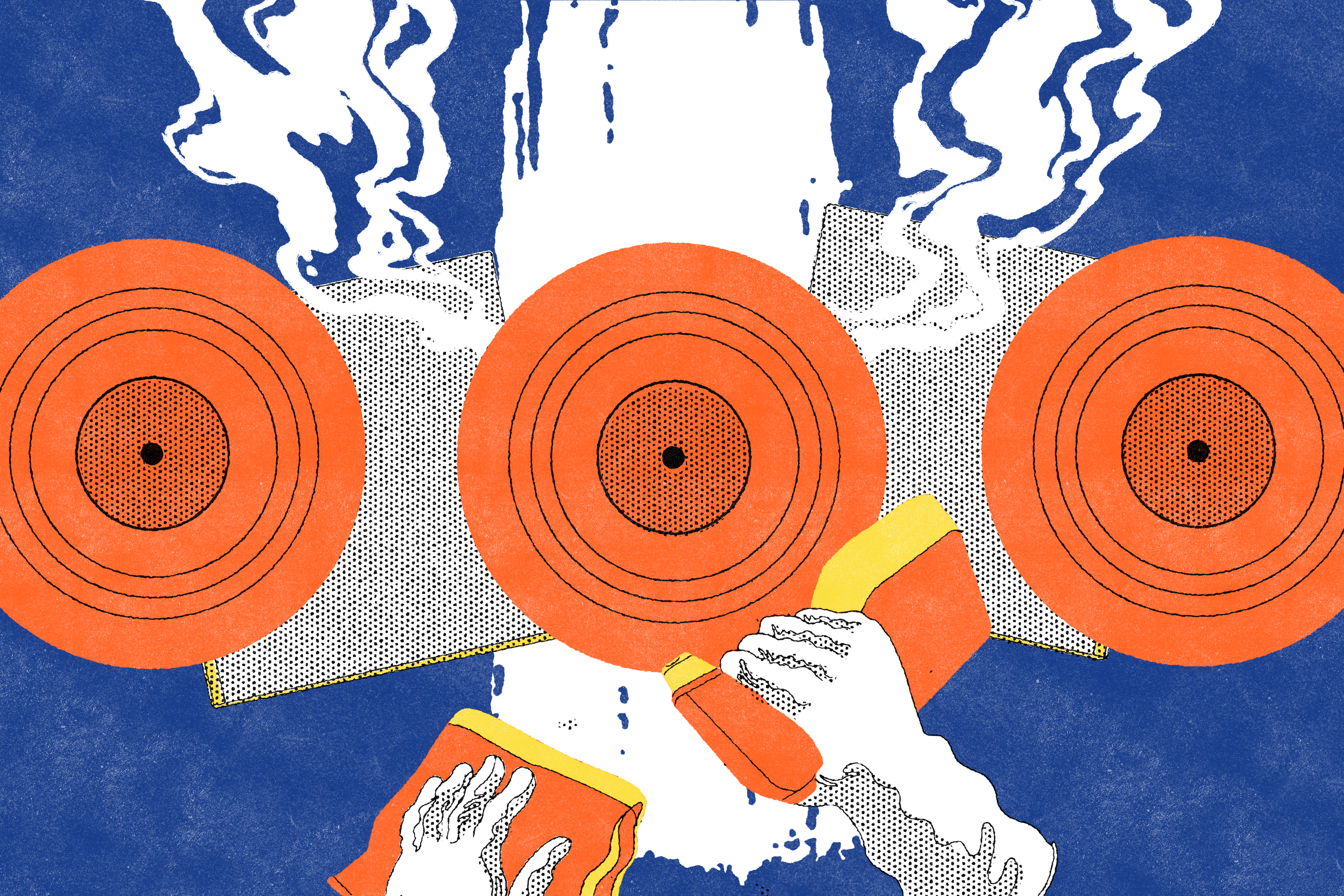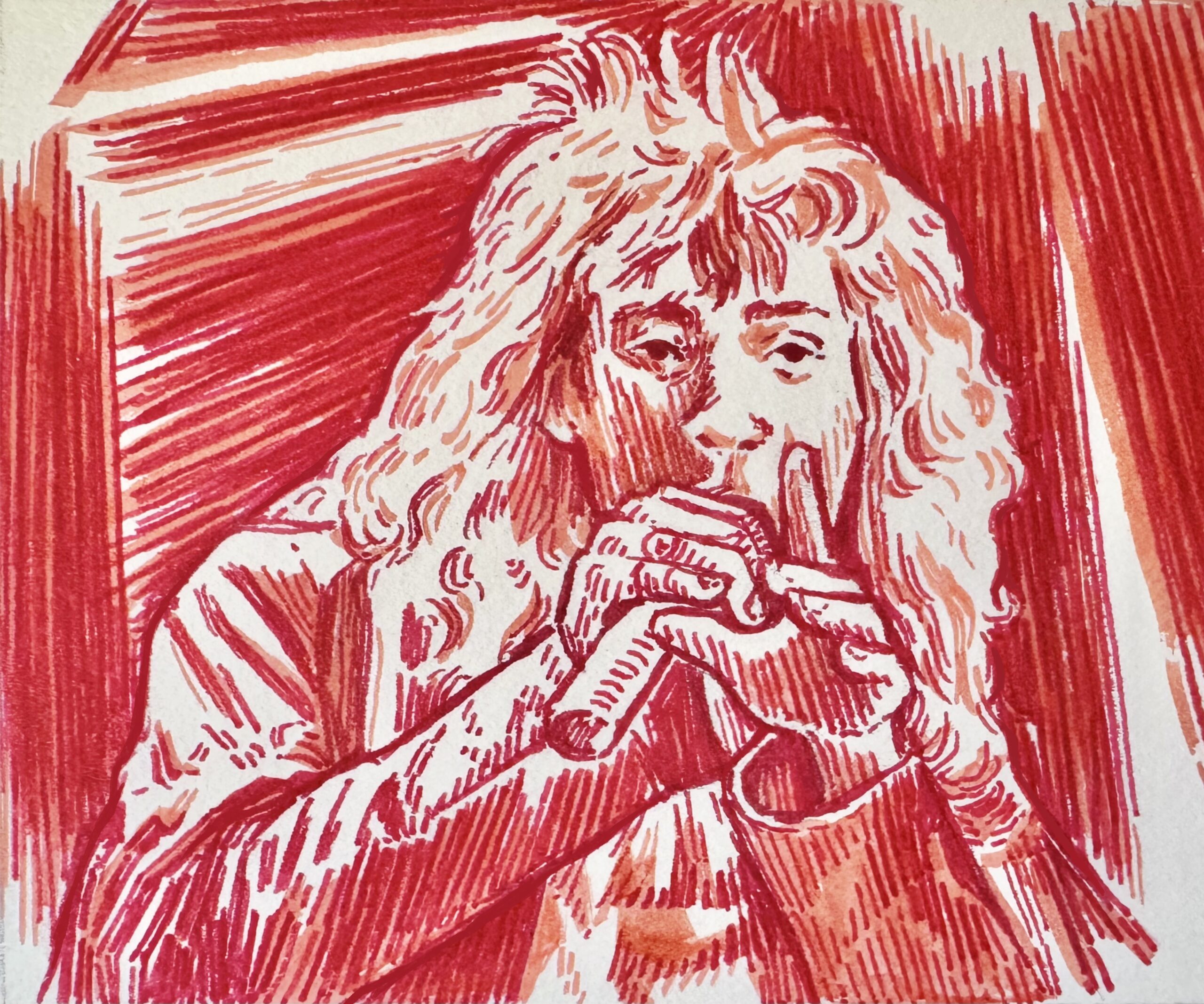SCAD Radio: Would you want to start off by giving a little bit of background about who you are and what you do?
J. Marshall Smith: Sure. My name is Jonathan Smith also more popularly known as J. Marshall Smith just for the ease of finding me on the Internet. I’m originally from Baltimore, I’m getting my masters in St. Louis at Washington University, which has a pretty cool new Illustration Masters Program. I mostly do comics and a little editorial illustration.
Radio: So what got you into illustration?
Smith: I studied fine arts in college. I have a painting and drawing and printmaking bachelor’s and I was always interested in art that communicated well and sort of engaged with the viewer in more of a dialogue and less of a diatribe. So even though I wasn’t studying illustration, I was always interested in stuff that was illustrative. And I ended up teaching at the Baltimore Academy of Illustration. They need someone to teach painting and drawing–so I sort of fell into it that way. I was interested in comics for a while, but I really started doing autobiographical stuff sort of inspired by a friend of mine named Meredith. I don’t know if she’s still making comics but you can find her Meredith Park (@meredithplayground) on instagram. Yeah and things just sort of kept rolling from there.
Radio: And you’ve done quite a few drawings of Tiny Desk concerts–I think they were part of your postcard series that you did? What made you decide to start doing those drawings?
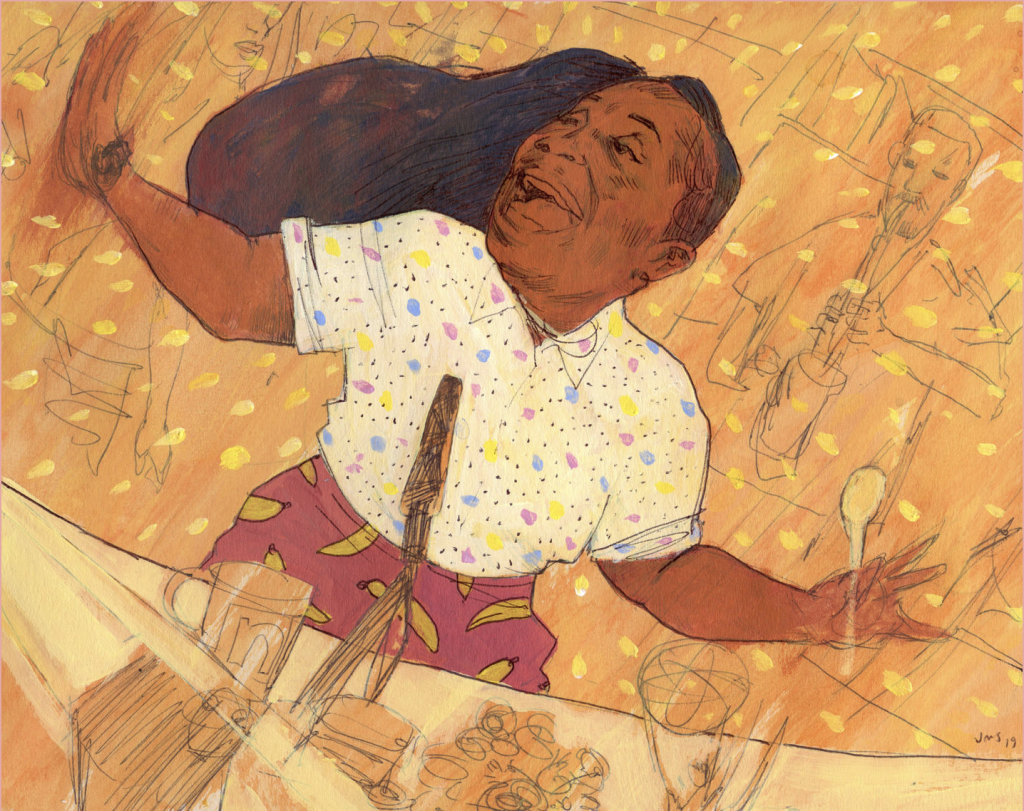
Smith: I do a lot of sketchbooking and like you alluded to, I was doing a series of drawings that were on blank postcards and then mailing them around to people based on something I was doing with my Patreon and that was a really fun project. I really enjoy the tiny desk concert series. I think it’s a cool way of finding artists I didn’t already know or seeing cool versions of stuff that I didn’t already know. So I was already drawing folks from that just as an exercise, and then I had a class that required us to come up with a mini series of things, so I just figured I would really lean into that since I was already doing it for fun.
Radio: I didn’t know that it became like a broader project other than the postcards.
Smith: Yeah! I mean it was only a handful of paintings. I enjoyed doing them–some were on the postcards but a few got to be a little bit bigger than that, you know nothing large but.
Radio: You just mentioned sketchbooks a little bit–what like got you into drawing in sketchbooks?
Smith: I mean I’ve enjoyed drawing for forever. So it’s a little hard to be like what got me started, but I started doing stuff in hardbound sketchbooks instead of like sketch pads after graduating high school and it eventually evolved into sort of a combination of sketchbook and journaling and then eventually also a planner. So now it’s like a planner-sketchbook-journal-everything in one book thing. Which works for me– definitely I find that I draw in it more because I always have it, and always need it for things. It does mean when you lose it, it’s the worst thing. I lost a sketchbook a few years ago, and I was hunting for it and I had stuff I needed written down in there and I eventually gave up looking for it, started a new one, and then I found it in my freezer.
Radio: Really!?
Smith: I guess I had it in my hand and you know, put it down to pick something else up and then I just had a frozen sketchbook which was not at all where I would have thought to find it.
Radio: Did it thaw out okay?
Smith: Yeah I mean it was fine–a little water damage, but everything was frozen so it was fine I guess.
Radio: I actually just spilled tea on my current sketchbook–I had like a travel mug in my backpack–but the damage wasn’t too bad, so sometimes you get lucky.
Smith: And sometimes that makes it all the better.
Radio: Yeah, it’s just distressed now!
Has working in your sketchbook impacted your process in terms of doing finished works at all?
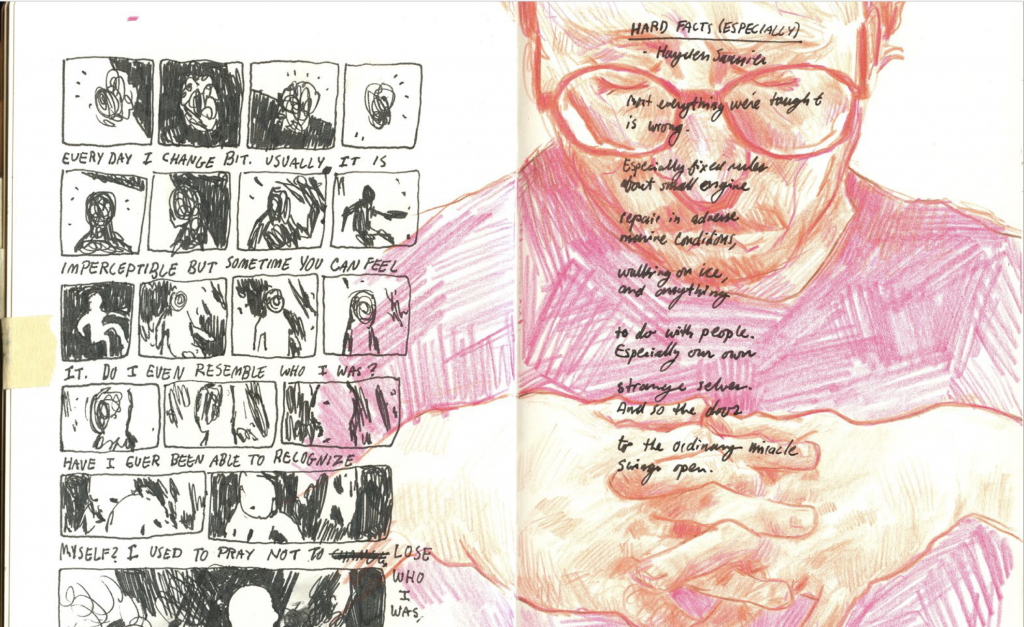
Smith: I’m not gonna pretend that every artist needs to have a big sketchbook practice–for some people it’s not that big of a thing. But, for me it is really important. I would like to say that I use it a lot for iterations and stuff and all the sketches and preliminary work that I should do. But that’s sort of a weakness, for me– I don’t really iterate, I usually just do two or three ideas and then grab one that I like and really go for it. For me, a lot of my work is drawn in my sketchbook and then I might scan it at a high resolution and then add some digital color or something. I’d say sketchbooks are really essential for my practice.
Radio: How do you balance having multiple different styles of illustration in your portfolio? Have you found that to be like a positive thing?
Smith: I don’t know–most of my work is self generated so honestly, sometimes I think I have too broad of a range represented. I get bored doing the same thing over and over again, and I think it’s really important to try lots of different things. But that doesn’t mean it all has to be in your portfolio. So I can’t really say if it’s helped or not, because it could help more to have less.
I think the best advice I ever got about portfolios is that you should treat your portfolio like the menu of a restaurant. In that, just because you can do something well and you really enjoyed doing it doesn’t mean it should be on your portfolio if you don’t want to do it again. Which, right after college I didn’t really get, so as scattered as my stuff is now it definitely is more focused than after I graduated.
Radio: How has higher education influenced you as an artist? What is the impact that going to school had on you?
Smith: I mean it’s a little hard to say–I can’t look into that parallel dimension where I didn’t do it, but I was working full time in undergrad. And it took me a little bit longer–I went to community college and then to a state school. Just because I was living on my own and paying for everything out of pocket. And now that I’m doing my masters, it’s kind of cool seeing how different schools do different things. The school I’m at now is very different from the one I went to undergrad for. I wouldn’t say that every artist needs to go to college for it. There’re plenty of great artists who save the money. It’s a very expensive thing, even with financial aid, you still have to pay your rent and everything. It’s scary, for sure.
But I think the huge benefit of school is the community that you get. People talk about networking and stuff and that can sound kind of slimy, but really just having a community of people who are interested in the same things and are sincerely interested in learning from each other and collaborating and helping each other is awesome. I think and there’s versions of that that you can find without going to school and even if you were to go to school, after graduating, you still have to find that. But it’s a big help–I’ve made a lot of great friends, who I helped and they’ve helped me and we learn from each other a lot.
Radio: Yeah, I think I think having artists friends really can influence you in a good way. I’ve noticed even just drawing around other people tends to impact how I’m working.
Smith: Definitely, some people like having others around, some people don’t–I like being around other people. It can get distracting sometimes, though.
Radio: It can be a give and take, for sure.
Who or what have been some of your biggest influences?
Smith: Well, like you’ve said, I have a pretty broad range of work and have an even broader range of interests. You know, in some areas the influence is more one way or the other. In terms of comics–I think I’ll just limit that discussion to just comics. Let’s see Eleanor Davis is phenomenal–I love her writing and her art. Jillian Tamaki is really nice. I got to meet both of them this past year, as part of my program, which was a dream for me because they’re huge idols for me. Meredith Park, like I said before. I feel lucky too–we went to high school together and she’s a little a couple of years behind me, but is way ahead of me artistically, I think. But, I’m always learning things and always being influenced by the stuff around me.
Something I’ve really found is that I’m a terrible judge of if I’m learning something or like when I’m learning, which means that, with going to school in a pandemic and everything it’s really easy to feel like I’m wasting my time. But then I’ll look at just my work from not even a year ago and I think my work has gotten a lot better. But when I’m in it, I can never tell.
Radio: That’s a really important thing to remember. So, are you guys doing classes in person?
Smith: We have studio access but there’s only a few classes in person and they’re very limited. So for me it’s just a chance to be physically in the studio and around other people. But if there’s too many people in the studio, we have to start doing shifts when you’re allowed in there and stuff. But, for me, I want to be in here as much as possible. Like I said, that community is chiefly important. This could just be because I’m a little bit older and have paid for everything out of pocket and so it’s like I’m paying for that studio–I’m renting the studio basically from the school, so I want to be here because they’re not going to give me a refund.
Radio: Do you think that your music taste has influenced your art?
Smith: Yeah definitely, particularly for comics. There’s a sort of lyricism that I strive for with a lot of my shorter autobiographical comics and I’m working on a big project now that’s a long form fiction thing, which is scary because I’m usually doing much shorter what I would describe as unprecious work. Like stuff that–if it doesn’t turn out–it’s no big deal. I took like a day, maybe two. But even with the longer stuff I still hope for a sense of lyricism and meditativeness, if that’s the right word. I really enjoy a huge range of music–everybody always says that. It’s like a cliche.
Radio: it’s kind of the line nowadays, people ask “What’s your favorite genre?”, especially when you’re working for a radio station and you’re like “Oh, please don’t, I have no idea”.
Smith: But as much as I would say that I listen to a huge range of music, it doesn’t all influence my work in the same way. I think a lot of more lyrically focused indie music, it has a more direct relationship like Sufjan Stevens, Julien Baker–I’m devouring the new Semler album, EP I don’t even know the difference because I’m not a music person, but it just came out a couple days ago and I can’t stop listening to it. I like stuff that is musically interesting but lyrically challenging or feels like it speaks to my own experience in some way.
Radio: You’ve taught before–do you feel like you’re saying i’m influenced you at all?
Smith: Definitely. I taught a few private lessons before starting to teach at the Baltimore Academy of Illustration, but I didn’t have any real teaching experience before that, and I was really nervous about it. You know, big time imposter syndrome. Like I said I don’t really know what I’m learning, but I also am a bad judge of that I know things. But once you get going with it you’re like “Oh, I actually have studied this for years, and do have things to tell people”.
But more than that it’s just that I think teaching something punctuates the learning process in a way that if you don’t have to find a way to put it into words for someone else and more than that find multiple ways of communicating it depending on the person you’re talking to, then you never really understand it. Teaching I think helps you learn in a good way and really helps your own work develop. And this is a little bit of an aside, but I think, similarly to teaching journaling is really good for clarifying your thinking and like because, for me, I can think and feel like a million different contradictory things and not really know them in the same way, but when you write them down, and you have to find the words for them–a) it gets it out of your brain, which can be helpful, just for getting some sleep in theory, but it also really helps you know what you think to have to write it even if you never go back and read it again.
Radio: Your comics have really personal themes, as you’ve mentioned, has it become harder to share those online as you’ve gained more notoriety?
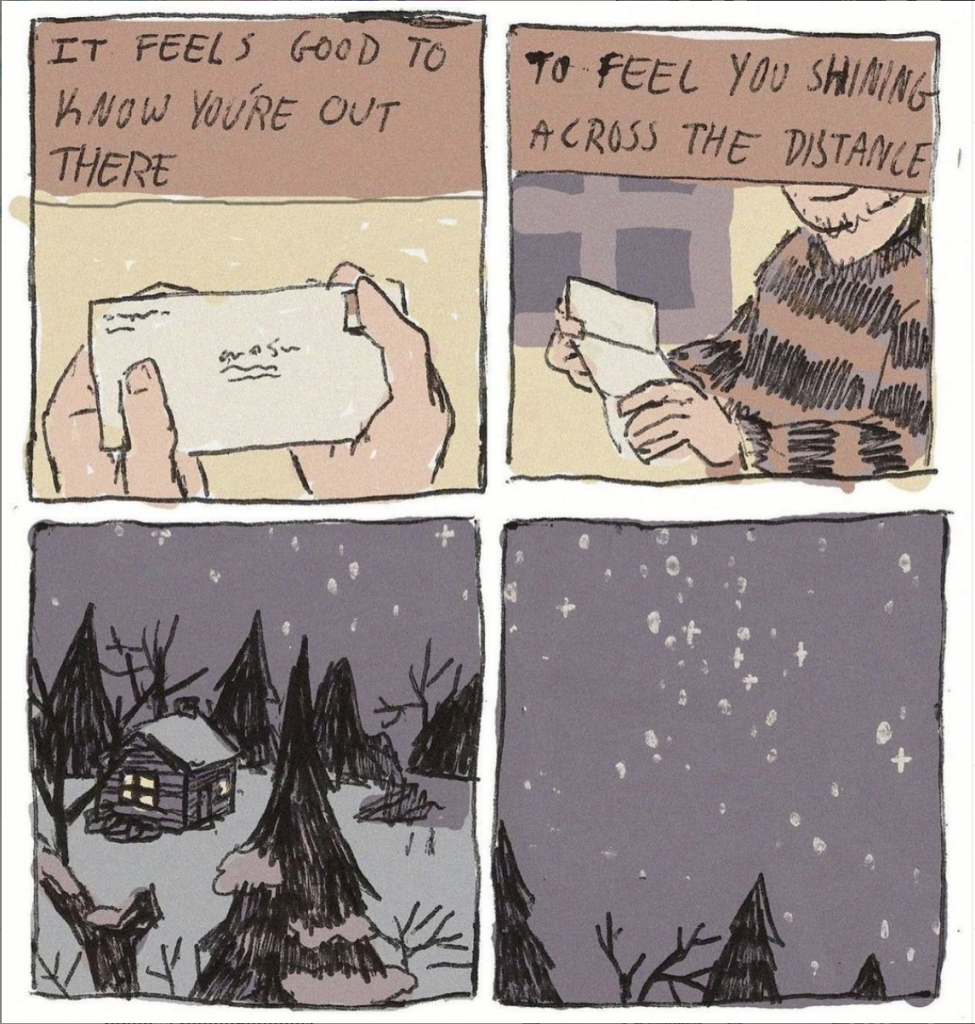
Smith: Yes and no. For me, I don’t really feel vulnerable about that stuff–if it’s something that I feel really raw about I don’t write about it. But like I said writing helps you get it out and helps you distance yourself from it, in some ways I think the hardest thing with people seeing my work that I didn’t really anticipate. It’s like this two way street aspect of social media in that I feel like I’ve gotten some, like you said, notoriety with social media. I’ve gotten a little bit more of a following on instagram then when I started this and I don’t really have a ton of success in the more traditional publishing and editorial world. And part of that is just it’s easier to put a picture up and hit send than it is to cold call an art director, which is terrifying.
But the two way street side of social media is something that I didn’t really consider in that you’ll just get some really rude messages from people sometimes which is fine, like people are a**holes. The hard thing for me is that I’m writing about really personal stuff, or I don’t think of myself as making “relatable content”–that’s something I think is a real problem in that people are just trying to be relatable in ways that can become inauthentic. Because stuff that is relatable does really well on social media people want to share it because it says something that they want to say and it reflects them but there’s a trap there where you can become inauthentic or shallow. So the two way street, I was a little unprepared for particularly people writing to you like they know you or they have a problem with their own life that they want your advice on like I’m their therapist or their friend and I’m not either of those things, I don’t even know them. So I’ve gotten better about that and right now I’m focusing less on autobiographical stuff and more on my thesis comic which is not coming along as fast as I like but it’s coming.
Radio: Alright, the last question that I have is what have been the most exciting opportunities for you as an artist or as a person?
Smith: I’m gonna keep it to just artist, because that’s already hard enough a question without opening up all of life. I think the most exciting things for me have been the first time I did SPX–the small press expo in Bethesda outside of DC–that’s really cool and it’s just an independent comics party. But I think one of the most exciting things for me has always been meeting people that I admire. I’m lucky enough to go to school with some really talented people here. I get to learn from John Hendrix who’s a really talented illustrator and other great teachers, I did a painting workshop with Nicolás Uribe a few years ago. I’ve just adored his work for years and there’s nothing quite like meeting someone you really admire and they turn out to be cool and not just a huge a**hole, which is always the fear. Hoping that there’s plenty of other fun and exciting things in the future, but I’m always just thrilled by meeting cool people.
Radio: It’s really gratifying to meet another cool person–it’s really tough to make new friends online and stuff right now, too.
Smith: As much as I get really anxious about what I was saying, the sort of two way street side of social media, it’s also awesome and I’ve had some cool opportunities because of it. And there’s kinds of work that I don’t think would have done that people get to see that I don’t think would have existed in traditional publishing. There’s also plenty of bad work. I think it democratizes the art market in a lot of ways too in that you can just directly buy from someone on the internet, instead of going to an art gallery and paying more for it and the artist makes less. Bad news for gallerists, I guess, but good news for everybody else.
Check out more of J. Marshall Smith’s work at his website or his instagram. We’re really glad to have had the opportunity to interview him!
